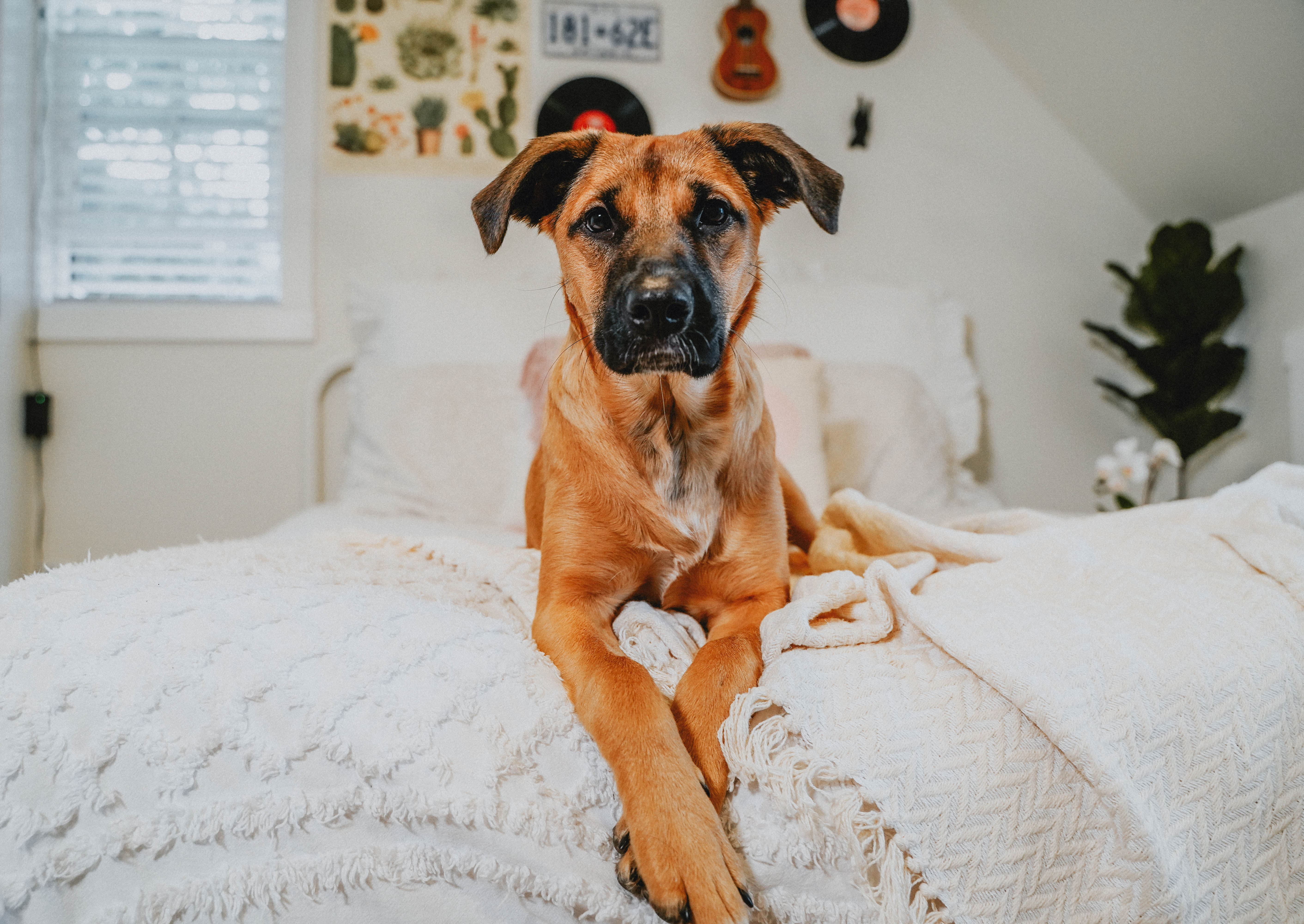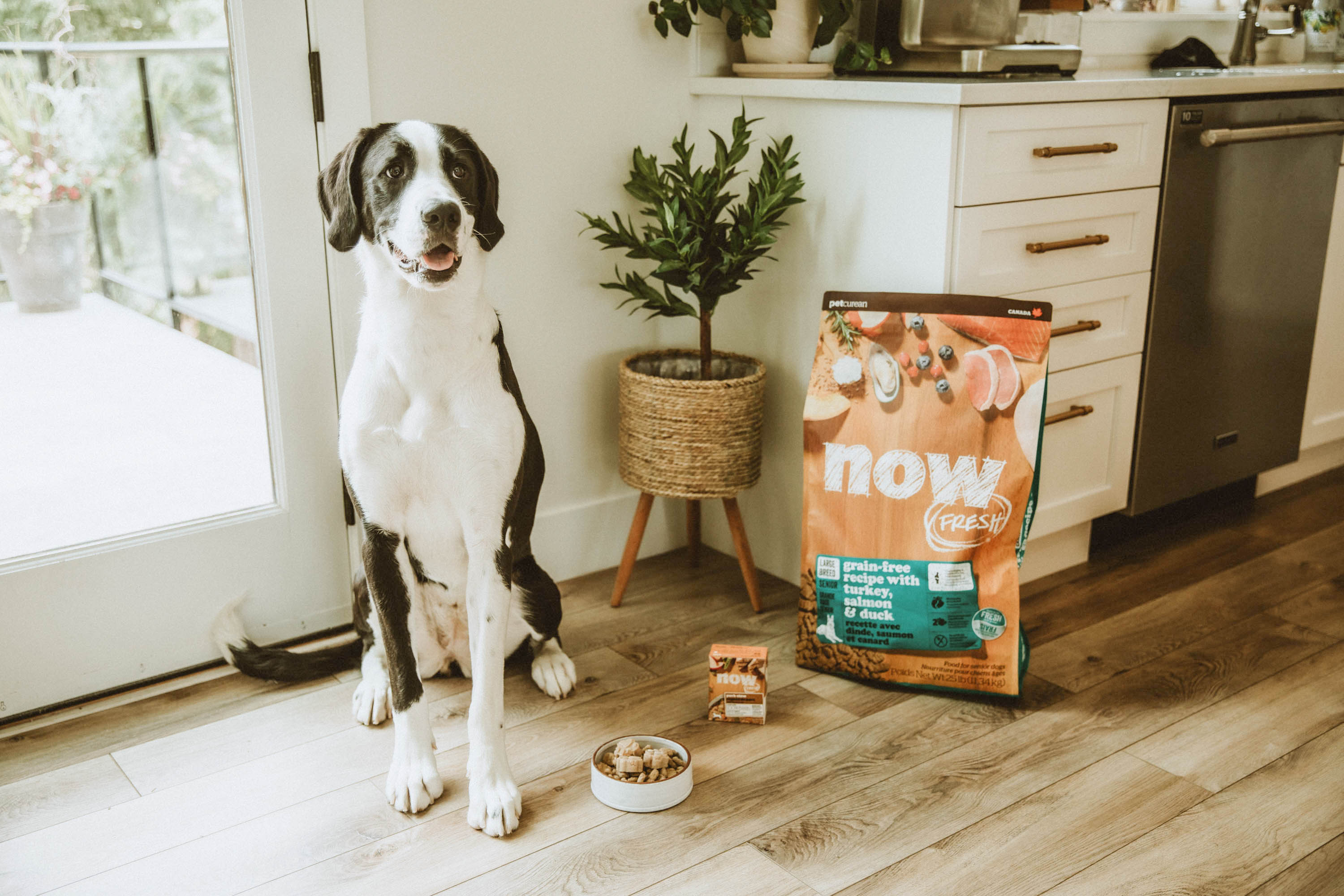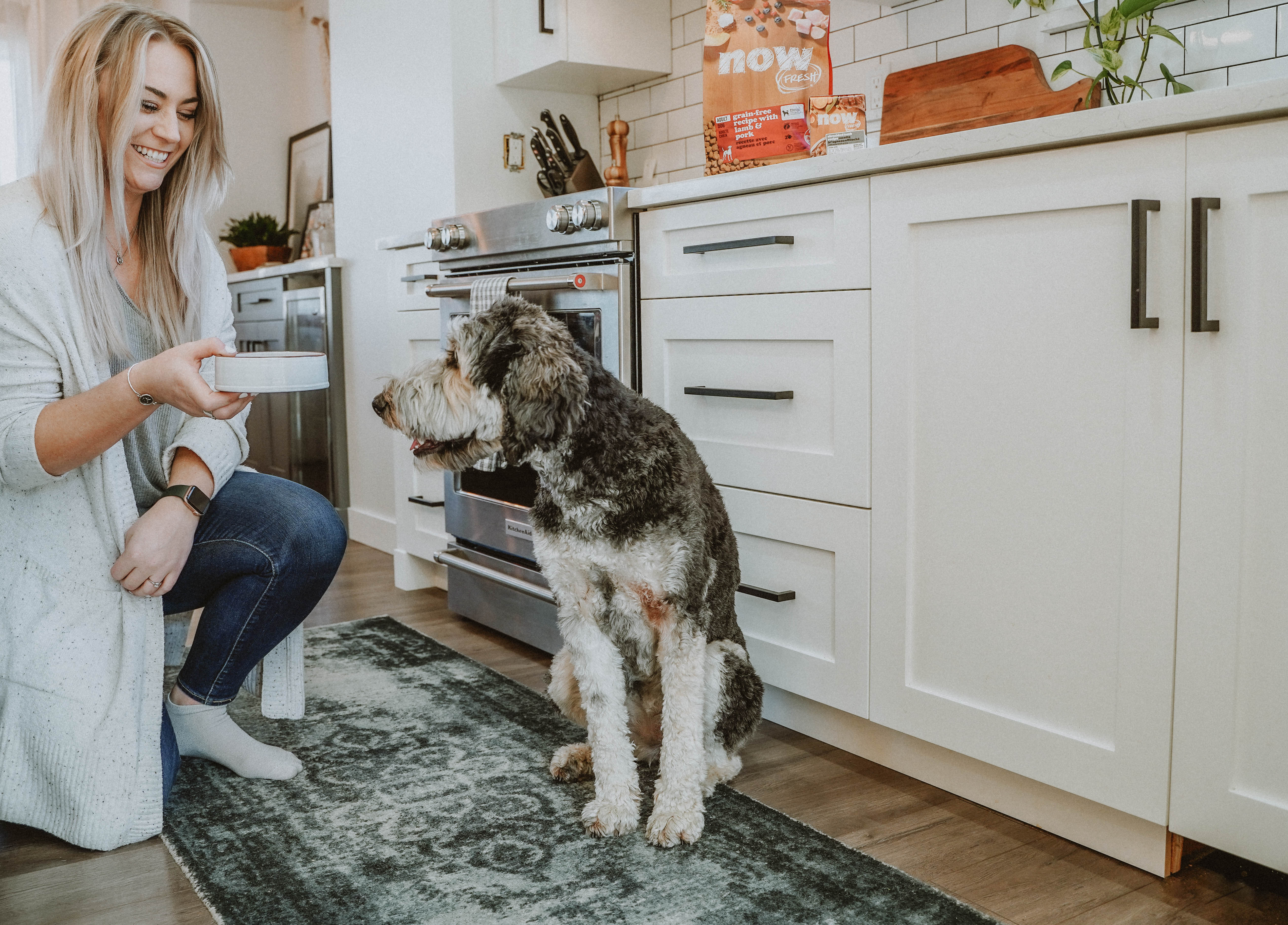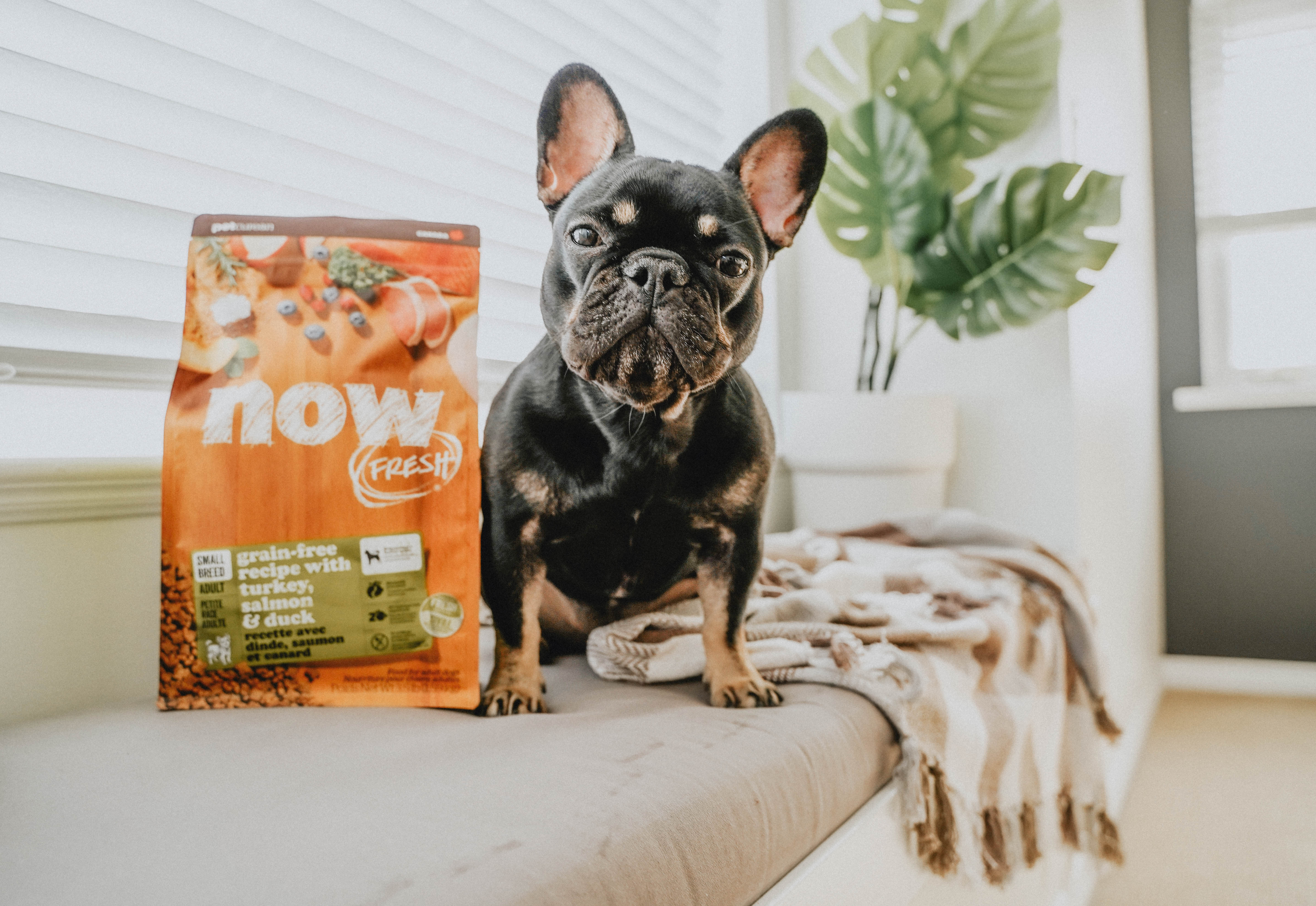This is a featured guest article from Now Fresh. Their idea is simple - pets deserve food that is made with the same love, care, and thoughtfulness as we put into preparing meals for the human members of our families.
Author: the NOW FRESH Team.
Downsizing your home can be stressful. Apart from actually finding a new place that makes you happy and suits your needs, there’s also the logistics of moving to consider — not to mention the emotions that come with letting go of certain belongings and saying farewell to your neighbors and memories.
As a pet parent, it’s important to consider that downsizing can be stressful for them too. While your dog may not have a closet full of outfits or a huge record collection to sort through and pack, domestic animals are often creatures of habit, and they may have trouble adapting to their new environment without some assistance.
Keeping these considerations in mind, we’ve compiled this guide (complete with an Amazon storefront for you to snag products you need) with our best tips for downsizing with your dog.
 How to prepare your pup for the move
How to prepare your pup for the move
As a dog owner, one of your first steps when preparing to downsize should be getting your pet used to a crate. Even if your dog was previously crate trained, springing one back on them without warning can be traumatic, depending on their age and routine. Most dogs actually enjoy crates, but if your plan is to just load them in on moving day without any prior practice, you aren’t setting yourself up for success.
Secondly, help your pet help you: use your best trick for calming your pet, or find one that works, so you can fully focus on a smooth transition. Consider investing in a weighted blanket or anti-anxiety jacket for moving day, and if you’re concerned about how the downsizing process will affect your dog’s behavior, talk to a vet about natural aids or calming medication.
The logistics of downsizing will command much of your attention. There may be times when you don’t have a moment to spare, even when your pet needs stimulation. Food-dispensing toys, lick-mats and brain games are great tools for stimulating dogs when your focus needs to be elsewhere. If all else fails, a day at a pet sitter’s house may be just the kind of break you both could use in the midst of moving stress.
Consider as well just how dramatically you are downsizing your space. If your new place is going to be a lot smaller, you may need to change the rules at home (especially if moving into an apartment building), meaning you should start planning a new training regimen.
Empathizing with your dog
Dogs are intelligent and can sense when a change is coming. Does your companion get anxious when they see you packing clothes for a short trip? If so, you can expect the same reaction to watching their whole environment get boxed up and moved to a new home.
Even as people, we deal with change in different ways — some more effectively than others. Consider your own stressors and difficulties when adjusting to something new, then consider how these emotions might be picked up and amplified in your pet, who is along for the ride with you. Empathy is key to helping your pet acclimate as smoothly as possible.
You’ve probably experienced the feeling of being homesick. Well, it can be the same for dogs. One good remedy is to create a familiar-looking space at your new home, with toys, cushions and beds arranged in patterns they’re used to seeing. You might not expect it, but even unfamiliar sounds can affect your pet’s stress level in a new environment. We encourage taking whatever steps you can to introduce some familiarity, for both you and your pet’s emotional wellbeing.
 How to help your dog adjust to their new surroundings
How to help your dog adjust to their new surroundings
Like humans, dogs can feel overwhelmed by too much change all at once. Our tip for introducing your pet to their new neighborhood is to explore it with them gradually, bit by bit, so they can adapt to the change comfortably. If your new home isn’t too far from your old one, you may even want to take advantage and get a head start by walking them around the area before the move happens. Just make sure you have a good leash when meeting new neighbors and their pets.
After settling in, you’ll want to make sure your pup gets plenty of exercise and stimulation. Living in a smaller space means your pet will be spending less of its energy than before, which can show up in negative ways like chewing or scratching at your new walls, floors, and furniture. Hiding food around the house makes for a stimulating game and a great energy outlet, while encouraging them to explore their new home.
Again, familiarity helps reduce your pet’s stress level when downsizing. Something as simple as keeping the same feeding and walking schedule they are used to helps assure them that even if their environment has changed, their routine hasn’t. Another tip: if there’s anything you can hold off on cleaning during the move, preserving some scents from your old house can also help ease any feelings of homesickness.
You may be surprised to learn nutrition can play a big part in your dog’s behavior during stressful times. Healthy pets are happy ones, so ensuring they have a balanced diet is actually one of the most important steps you can take to help your companion through the downsizing process. Senior pets may be particularly prone to poor adjustments, especially if they’ve been in one home for most of their life. If you’re a senior pet parent, the NOW FRESH Recipes for Senior Dogs are crafted by expert pet nutritionists and are made with fresh turkey, salmon or duck to keep your furry friend happy and healthy in their golden years.
 Finally, giving your dog a space of their own provides a sense of ownership and encourages their acceptance of the new space. Designate a special area for their toys, beds and other supplies, and don’t be afraid to use a gate at first. In a smaller home with different rules, this tactic also helps them understand more quickly the areas where they can venture and those they have to avoid.
Finally, giving your dog a space of their own provides a sense of ownership and encourages their acceptance of the new space. Designate a special area for their toys, beds and other supplies, and don’t be afraid to use a gate at first. In a smaller home with different rules, this tactic also helps them understand more quickly the areas where they can venture and those they have to avoid.
Our dogs rely on us to make the best choices for their wellbeing, and that includes helping them adjust and cope through stressful times like downsizing. These tips ought to help you through the process, but every pet is unique, so just remember to be patient, use positive reinforcement, and pay attention to their physical and emotional signals. We know you’ll do great!
For more advice on feeding your pet, you can follow NOW FRESH on Facebook and Instagram, or sign up for their newsletter.
Want to give Now Fresh a try? Purchase a bag from Chewy.com!
This is a featured guest article from NOW FRESH. Their idea is simple - pets deserve food that is made with the same love, care, and thoughtfulness as we put into preparing meals for the human members of our families.
Author: The NOW FRESH Team




